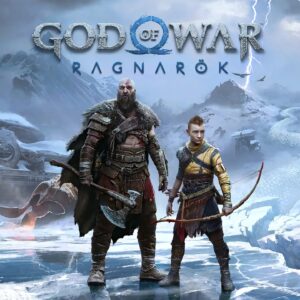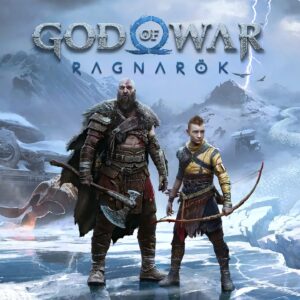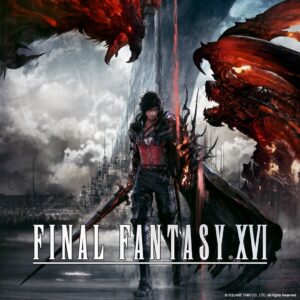Marvel, officially known as Marvel Entertainment, LLC, is a prominent American media and entertainment company renowned for its vast universe of comic books, movies, and television shows. Founded in 1939, Marvel has created iconic characters such as Spider-Man, Iron Man, the X-Men, and the Avengers, establishing a significant cultural impact through its storytelling and superhero franchises. The Marvel Cinematic Universe (MCU), launched in 2008 with “Iron Man,” has become a global phenomenon, captivating audiences with interconnected narratives and blockbuster films. Marvel continues to expand its legacy through innovative storytelling across various media platforms, including comics, animated series, and video games.
Marvel’s Spider-Man: Miles Morales Price in Pakistan
Current Price: ₨ 6,530
Below is the summary of current prices of Marvel’s Spider-Man: Miles Morales in Pakistan
- Lowest Price of Marvel’s Spider-Man: Miles Morales: Rs 1,162
- Highest Price of Marvel’s Spider-Man: Miles Morales: Rs 12,499
- Average Price of Marvel’s Spider-Man: Miles Morales: Rs 6,530
Marvel’s Spider-Man: Miles Morales Price Comparison in Pakistan
Explore the latest prices for the iPhone 14 Pro Max across various trusted retailers in Pakistan. Below is a comprehensive list detailing the current prices from multiple websites, giving you the best options to choose from. Whether you’re looking for the lowest price or the best deal, we've got you covered!
| No. | Website Logo | Website | Price |
|---|
Marvel: A Comprehensive OverviewMarvel Entertainment, LLC, commonly referred to as Marvel, is a dominant force in the realms of comic books, film, television, and beyond. Founded in 1939 as Timely Publications by Martin Goodman, the company has evolved significantly over the decades, becoming synonymous with superhero culture and pop culture at large. Marvel’s characters, stories, and branded media have captured the imaginations of millions, making it a cornerstone of entertainment.### Early BeginningsMarvel’s history can be traced back to the Golden Age of Comic Books. The company’s first publication, “Marvel Comics #1,” introduced iconic characters such as the Human Torch and Namor the Sub-Mariner. However, it was in the 1960s, under the creative leadership of writer Stan Lee and artist Jack Kirby, that Marvel truly transformed the comic book landscape with the launch of its flagship superhero titles. This era marked the debut of beloved heroes like Spider-Man, the Fantastic Four, Iron Man, Thor, and the X-Men. What set Marvel apart from its competitors was its commitment to crafting relatable characters who wrestled with personal issues and moral dilemmas, rather than just fighting villains. This groundbreaking approach laid the foundation for what would become known as the Marvel Universe.### The Marvel UniverseThe Marvel Universe is a rich tapestry of interconnected narratives featuring superheroes, villains, and supporting characters inhabiting a shared fictional reality. This concept of a cohesive universe is one of Marvel’s most significant contributions to the comic book industry. Characters from different titles frequently crossed paths, engaging in team-ups and multi-issue story arcs. The “Avengers” series exemplifies this by bringing together various heroes to combat formidable threats.Through ongoing narratives, Marvel has explored complex themes such as power, responsibility, prejudice, and redemption. Storylines like the “Infinity Gauntlet” saga, “Civil War,” and “House of M” have left an indelible mark, generating considerable interest and intrigue among fans. ### Expanding Into Film and TelevisionMarvel’s success transitioned seamlessly into other media with the establishment of Marvel Studios in 1993. However, it wasn’t until the release of “Iron Man” in 2008 that the Marvel Cinematic Universe (MCU) was officially born. Featuring an interconnected series of films that brought various Marvel characters to life on the big screen, the MCU has exceeded commercial expectations and has become the highest-grossing film franchise in history.With blockbuster hits like “The Avengers,” “Black Panther,” “Spider-Man: No Way Home,” and “Avengers: Endgame,” Marvel Studios has not only revolutionized the superhero genre but has also demonstrated the power of serialization, turning audiences into ardent devotees eagerly anticipating each release. The MCU’s Phase system allows for sprawling narratives that build upon one another, creating an expansive universe that captivates viewers.In addition to films, Marvel has ventured into television with series like “Daredevil,” “Jessica Jones,” and “WandaVision.” These shows further explore character depth and side stories that complement the primary movie narrative, showcasing Marvel’s commitment to world-building.### Licensed Merchandise and Cultural ImpactMarvel’s influence extends beyond comics and screen; the brand is a titan in merchandise. From action figures to apparel, the imagery and narrative of Marvel characters permeate various aspects of culture. The company has successfully partnered with other brands for promotions, merchandise, and theme park attractions, solidifying its place in global entertainment. Marvel’s characters have become cultural icons, with the likes of Spider-Man, Captain America, and Wolverine transcending their comic origins to become symbols of heroism and resilience. Merchandise, cosplay, and fan conventions, such as San Diego Comic-Con, illustrate the fervent dedication of the fan base. ### Legacy and FutureMarvel’s legacy is characterized by its commitment to innovation, diversity, and storytelling. The introduction of more diverse characters, such as Miles Morales (Spider-Man) and Kamala Khan (Ms. Marvel), showcases its intentions to reflect contemporary society and build a more inclusive hero narrative.As Marvel continues to explore new stories and characters through both its cinematic and comic divisions, the anticipation for future projects remains high. With an ever-expanding universe of films, series, and graphic novels planned, Marvel shows no signs of slowing down. The combination of established characters and the introduction of new ones ensures that the Marvel brand will remain a vibrant and dynamic part of global culture for years to come.Marvel’s journey from a small comic book publisher to a global entertainment powerhouse is a testament to the enduring popularity of its characters and narratives. The company not only celebrates traditional superhero tales but also challenges norms, paving the way for future generations of creators and fans to engage with its rich legacy.
Marvel’s Spider-Man: Miles Morales Features
Certainly! Below is a specification that outlines various aspects of the Marvel Universe, covering its core components, structure, and characteristics.### Specification of the Marvel Universe#### 1. **Overview** - **Name**: Marvel Universe - **Type**: Fictional Universe - **Genre**: Superhero, Adventure, Science Fiction, Fantasy - **Creator**: Martin Goodman (initially), with significant contributions from writers like Stan Lee, Jack Kirby, Steve Ditko, and many others - **First Appearance**: Early 1930s, with the introduction of characters such as the Human Torch and Sub-Mariner.#### 2. **Key Components** - **Characters**: - **Superheroes**: Spider-Man, Iron Man, Thor, Captain America, the Hulk, Wolverine, etc. - **Villains**: Thanos, Loki, Green Goblin, Magneto, Doctor Doom, etc. - **Supporting Characters**: Mary Jane Watson, Nick Fury, Peggy Carter, etc. - **Teams**: - **The Avengers**: A team of superheroes dedicated to protecting Earth. - **X-Men**: Mutants who fight for the coexistence of mutants and humanity. - **Fantastic Four**: A team of adventurers who gained super-powers from cosmic rays. - **Organizations**: - **S.H.I.E.L.D.**: A strategic, global intelligence agency. - **Hydra**: A secret society and terrorist organization. - **The Hand**: A secretive and ancient group of ninjas.#### 3. **Geography** - **Locations**: - Real cities (New York City, Los Angeles, etc.), fictional cities (Wakanda, Atlantis, etc.), and important landmarks (The Baxter Building, Avengers Tower). - **Dimensions/Realms**: - Different realms such as Asgard, Hell, the Dark Dimension, and alternate universes.#### 4. **Media Adaptations** - **Comics**: Original medium, with a vast catalog spanning decades. - **Movies**: - Marvel Cinematic Universe (MCU) including titles like "Iron Man", "The Avengers", "Black Panther", etc. - Other adaptations (animated series, direct-to-video releases). - **Television Series**: Live-action and animated series, including “Daredevil”, “WandaVision”, and “Agents of S.H.I.E.L.D.” - **Video Games**: Various video game adaptations across platforms and genres.#### 5. **Themes** - **Heroism vs. Villainy**: Exploration of the moral complexities between heroes and villains. - **Identity and Responsibility**: The struggle of characters to balance their powers with personal lives and societal expectations. - **Diversity and Inclusion**: Representation of various cultures, backgrounds, and identities.#### 6. **Art Style & Aesthetic** - **Illustration**: Dynamic and colorful artwork; notable artists include Jack Kirby, John Romita Jr., and Jim Lee. - **Character Design**: Iconic costumes and symbols, emphasizing individuality and power symbolism.#### 7. **Cultural Impact** - **Fan Community**: A vast and active community of fans, influencers, and creators. - **Merchandising**: Extensive range of merchandise including action figures, clothing, collectibles, and more. - **Conventions and Events**: Presence in major comic conventions (e.g., San Diego Comic-Con) and organized fan events.#### 8. **Future Development** - **Expansions**: Continuation of comic series, new character introductions, and management of the cinematic universe. - **Innovations**: Exploration of new narratives in different media formats (streaming series, podcasts, interactive media).### ConclusionThe Marvel Universe is a rich tapestry of characters, stories, and artistic representations that captivates audiences worldwide. Its ongoing evolution and adaptability to various media ensure its relevance and continued fan engagement.
Marvel’s Spider-Man: Miles Morales Comparision
Sure! Here is a comparison table that outlines several key aspects of the Marvel Cinematic Universe (MCU) alongside the Marvel Comics Universe. This table can help highlight the differences and similarities between the two.| Aspect | Marvel Cinematic Universe (MCU) | Marvel Comics Universe ||-----------------------------|--------------------------------------------|----------------------------------------|| **Format** | Film and television series | Printed comic books, web comics, graphic novels || **Medium** | Live-action and animated films | Illustrated stories || **Character Development** | Characters evolve over multi-film arcs | Varied character arcs across centuries || **Continuity** | Interconnected films and series, shared universe across movies | Multiple story arcs and alternate universes (multiverse) || **Tone** | Generally lighter, family-friendly | Varied; can be dark and gritty or light-hearted, depending on the storyline || **Famous Characters** | Iron Man, Captain America, Thor, Black Widow, Spider-Man | Spider-Man, X-Men, Fantastic Four, Deadpool || **Major Themes** | Heroism, sacrifice, teamwork, redemption | Ethics of power, identity, responsibility, societal issues || **Crossovers and Events** | Major crossover films (e.g., "Avengers" series) | Large crossover events (e.g., "Civil War," "Infinity Gauntlet") || **Adaptation** | Many films are adaptations of comic arcs | Original stories, but also reworks of existing comic arcs for new audiences || **Audience Reach** | Primarily mainstream cinema and TV viewers | Niche audience with dedicated comic readers || **Release Schedule** | Planned phases with scheduled releases | Ongoing releases without a specific schedule || **Merchandising** | Major merchandise deals (toys, clothing) | Merchandise available but not as widely commercialized as MCU |This table provides a high-level comparison between the MCU and the Marvel Comics Universe, highlighting their different forms of storytelling and their respective impacts on popular culture. If you require more specific comparisons, please let me know!












Reviews
There are no reviews yet.